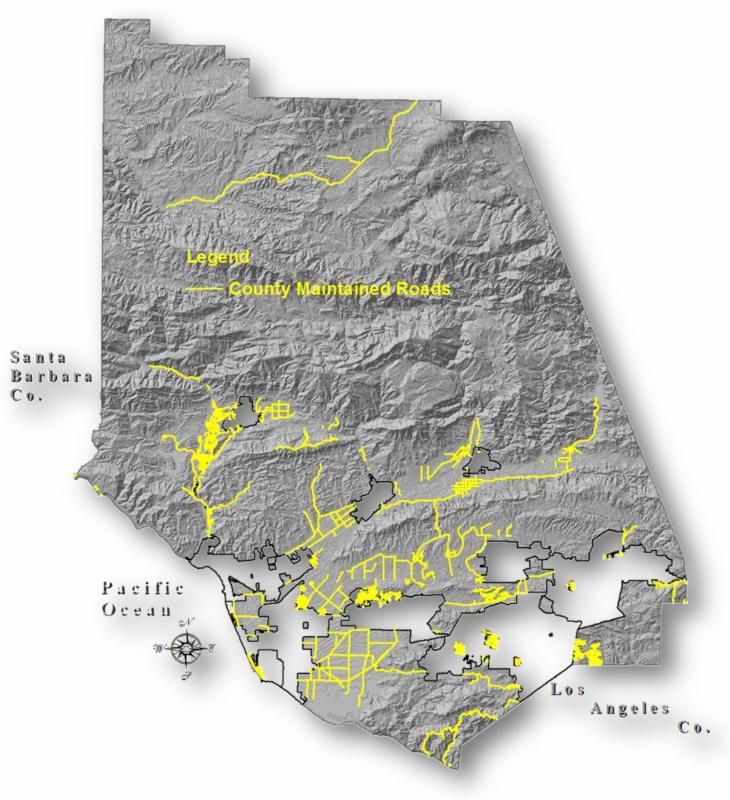| |
| Ventura County Civic Alliance
Livable Communities Newsletter |
|
2016 2nd Quarter, Number 38
|
May 2016
|
|
|
|
Welcome to Our Spring 2016 Livable Communities Newsletter!
The Ventura County Civic Alliance is a unique regional collaborative representing a balanced mix of Economic, Environmental, and Social Equity perspectives. Our mission is to work together to promote a healthy and sustainable future for Ventura County. Articles in this edition will proudly tackle topics from the perspective of the Three E's represented by the Alliance.
Our first two articles discuss the new $15 minimum wage law that was passed earlier this year. Maricela Morales, Co-Founder and Executive Director of CAUSE (Central Coast Alliance United for a Sustainable Economy), reviews the impact of this measure through the lens of Social Equity. Gary Cushing, President/CEO of the Camarillo Chamber of Commerce and owner of the Camarillo Marie Callender's Restaurant, discusses the law from the viewpoint of the Economy. Please use the links provided to reach the full version of each article in order to fully appreciate the importance and complexity of the changes ahead of us with an increased minimum wage.
Our next two articles discuss transportation infrastructure, what needs to be done and our challenges to pay for it. David Fleisch, Director of the Ventura County Public Works Transportation Department, discusses
several current and emerging challenges that the VCPWATD (along with most municipal agencies) is facing that provide cause for concern about this vital capital asset known as transportation infrastructure. Dave's message is followed by an article by Darren Kettle, Executive Director, Ventura County Transportation Commission (VCTC), that addresses why this is now the time for residents to invest in the future to repair, preserve, and improve the transportation system that adds so much to Ventura County
'
s
quality of life.
As always, we ask for your feedback on what we are presenting. We would like to incorporate this feedback into further coverage of these topics.
Thanks,
Stacy Roscoe
|
|
The Social Equity Side of the Minimum Wage Discussion
by Maricela Morales
Working hard at a full-time job should allow you to earn enough to support your family above the poverty line. Today, that's not a reality for thousands of Ventura County farm workers, cooks, landscapers, custodians, housekeepers, and other workers who aren't paid enough to make ends meet. Right now, a mother of two who works full-time at the current minimum wage earns about $20k a year. She earns less than the median rent in Ventura County of $1,759 a month. She can squeeze her family into a one bedroom apartment in a dangerous neighborhood, but even then in order to pay the bills, to make the rent and keep the lights on, every month she has to sacrifice something, like childcare while she works, nutritious food for her family, or taking her kids to the doctor.
The recently passed increase in California's minimum wage could give her an opportunity to move up. By the year 2022, she could be earning $15 per hour, and might be able to afford more reliable transportation to get to a new job in a different neighborhood, instead of spending hours taking two buses, which often run late. She could earn enough to invest in the health and education of her children by taking her son to the dentist for the tooth pain that's been making it hard for him to focus in class, or putting her daughter in science camp for the summer.
When low-income families earn enough to spend on things like decent housing, quality food, childcare, healthcare, and transportation, we all benefit. 145,000 workers in Ventura County would see a raise, putting hundreds of millions of dollars annually in the pockets of local residents, who would circulate it through our local economy by spending it at local businesses like grocery stores, restaurants, auto repair shops and daycare centers. This could transform the economic landscape of communities like Oxnard, Port Hueneme, Santa Paula and Fillmore by dramatically reducing poverty and boosting neighborhood businesses.
While it is often claimed that a raise in the minimum wage mainly benefits teenagers working their first summer job, a UC Berkeley analysis found that teenagers make up only 4% of the workers in California who earn less than $15 per hour. In fact, 37% of workers who would see a raise are parents, and on average these workers earn half of their family incomes.
The increased costs to businesses are often exaggerated, as expenses like rent and raw materials make up a larger share of costs than labor for most businesses. The UC Berkeley study projected that on average businesses statewide would have to raise prices by less than 1 percent over several years, after making up for higher wages with the lower turnover and increased productivity of better paid workers. The higher labor costs for business owners would also be offset by higher sales resulting from greater buying power among millions of state residents whose incomes are growing.
Business advocates claimed there would be massive economic collapse when Seattle passed the first $15 minimum wage, and yet Seattle is still standing. The doomsday predictions came from those who see workers as costs on a spreadsheet, but workers are human beings. When they get a raise above the poverty level, they care about their job and put their hearts into it, and as human beings, they are not just workers but also customers in the same community, who will buy the goods and services they create if they can afford to do so.
Wages have stayed flat and even declined for low-wage workers nationwide, despite record high corporate profits and stock values. Since 1979, low and middle income workers in California have actually seen their real wages decline when adjusted for inflation, with only the top 40% of earners seeing any wage gains at all. Something is broken in our economy, where economic gains at the top are no longer benefitting average working families. Raising the minimum wage is not going to fix everything wrong with our economic system, but it's a big step in the right direction.
|

Minimum Wage Increase in California
by Gary Cushing
The notion that raising the minimum wage will solve all problems for low income wage earners is a myth. Where does the money come from to raise the minimum wage now to $15? What do businesses have to do to stay open? How does the senior citizen fare in the raising of the minimum wage in California? How does the State of California find the $4 billion to pay their wage increases? There are alternatives that make more sense, but won't get politicians any votes, and isn't that what this is all really about anyway?
Where does the money come from? It must come from consumers in the market place. All businesses will have to raise the wages of all employees. The cook in the restaurant that was making $14 to $15 per hour before the increase is not going to be happy that someone just hired will be making the same as he is. He will want the same $5 increase as the 16 year old hostess, server, or busboy. All wages paid will have to be raised by 50% to keep the employees happy.
Where does a business get the money? It must raise prices to cover the increase or cut hours from existing employees. There aren't any other ways to pay the wages. So how much does a typical restaurant need to raise prices to cover the increase? They will have to raise prices from 20 to 25 percent. This is assuming that they will still get the same number of customers coming through the door willing to pay the increased product costs. The 20 to 25 percent increase will be a minimum since the purveyors that the restaurant uses will also have to increase their costs because they, too, are paying higher wages. If you learned anything in Economics 101, you know there is a thing call supply and demand: as the price of an item increases there is less demand for the item. So, if a restaurant raises its prices to cover the wage increase yet loses customers, it will not be able to survive. The net revenue will decrease and the restaurant will be out of business.
What do businesses have to do to stay open? They must control costs. If you are in a service industry it is very difficult to cut staffing; it is a people business. The staff must either work harder or you must mechanize and eliminate employees. There is no magic solution for controlling costs; it is cut hours to existing employees. When someone takes a low wage job do they believe that the business should pay more even though the employee is not doing more work or being more productive?
How do the senior citizens make out when the minimum wage goes up in California? They are the big losers in this game; they see prices rising in the market place with no additional income to pay for the goods and services. The fixed monthly income doesn't go up for a senior citizen or pensioned retiree, since their increases are based on the Federal Cost of Living. If California's prices rise 20% there isn't going to be a 20% increases in their income. So the senior citizens after working their whole lives now gets their buying power compromised at the end of their life. How fair is that?
|

Transportation Issues for the County of Ventura Unincorporated Areas
by David Fleisch
The unincorporated road network traverses 1,873 square miles of Ventura County from sea level up to over 8,000 feet. The same crews that plow snow in Lockwood Valley clear sand from beachfront roads in the Silver Strand area. The network of over 540 centerline miles is comprised of a unique blend of scenic rural roads with incredible ocean vistas and sweeping views of agricultural crops (a key economic engine of the County); urban roads in areas such as El Rio, Oak Park, and Newbury Park; and several regionally significant arteries that connect to the cities and the state highway system. In addition to the roadways, the transportation infrastructure includes 158 bridges, 700 miles of unpaved shoulders, 340 miles of concrete curb and gutter, 80 miles of storm drain pipes and culverts, 40 traffic signals, and over 12,000 signs.
A dedicated team of 113 professionals in the Ventura County Public Works Agency Transportation Department (VCPWATD) is responsible for designing, constructing, planning, operating, and maintaining all of the components of this capital asset known as transportation infrastructure. This is accomplished year round through operations headquartered at the Hall of Administration in the City of Ventura and maintenance facilities in Saticoy and Moorpark, with a satellite facility in Lockwood Valley.
There are several current and emerging challenges that the VCPWATD (along with most municipal agencies) is facing that provide cause for concern about this vital capital asset. These are: inadequate funding, aging infrastructure, increasing public expectations and mandated requirements, and regulatory requirements.
|

A Plan to Keep Ventura County Moving
by Darren Kettle
While used by everyone, the transportation system gets little attention - until things begin to go awry. When traffic on U.S. 101 slows to a crawl, when potholes multiply, when buses and trains are unavailable, people take notice.
Like all of Southern California, Ventura County's population is mobile and growing. More residents and visitors mean more traffic. On the 101, Ventura County's transportation backbone, drivers already collectively average 28,000 hours a day stuck in traffic. The picture on the 118 isn't much better. All these hours wasted in traffic stifle local business and rob us of time with our families, and congestion on our freeways is projected to increase by up to 50% in coming years.
At the same time, our population is also aging. By 2030, more than 21% of Ventura County's population will be over the age of 65. Without greater investment in our region's transit system, the Baby Boom generation, the most mobile in human history, faces a future of shrinking transportation options. Seniors-along with youth, veterans and people with disabilities-need affordable transit to basic lifeline services.
Over the years, my staff and I have spent hundreds of hours talking to citizens, business owners, elected officials, and city engineers all over Ventura County. No matter where we go, we have heard loud and clear: "Please take care of our city streets." Today, Ventura County finds itself at the edge of a transportation fiscal cliff. Over the next 30 years, city and County engineers across the County estimate at least a $1.3 billion shortfall just to maintain streets in their current condition.
Construction costs continue to rise and, for every day we defer street maintenance, costs to repair roads increase. At the same time, state and federal funding is shrinking and the rules of the game have changed. In order to get its fair share of transportation tax revenues from Sacramento and Washington, Ventura County competes against other counties. To access tax dollars, even those paid by our own residents at the pump in many cases, a local match is required.
On April 22, 2016, the Ventura County Transportation Commission (VCTC) voted to place a one-half cent transportation sales tax on the November 2016 ballot. This 30-year transportation sales tax measure not only allows Ventura County to begin to fund needed improvements, but also provides a source of local matching funds necessary to bring more federal and state tax dollars home.
|
|
|
Thanks to the Following Supporters of the 2015 Ventura County
Civic Alliance State of the Region Report
RESEARCH SPONSOR
Ventura County Community Foundation (VCCF) Fairburn Fund
PRESENTING SPONSORS
Ventura County Community College District
Workforce Investment Board of Ventura County
DOMAIN SPONSORS
AT&T
California Lutheran University
California State University Channel Islands
County Commerce Bank
County of Ventura
Gene Haas Foundation
Limoneira
McCarthy Companies
Procter & Gamble
Ventura County Deputy Sheriffs Association (VCDSA)
SUPPORTING SPONSORS
The Port of Hueneme
Rabobank
Ventura County Coastal Association of Realtors
CONTRIBUTING SPONSORS
Friends of the Santa Clara River
Kaiser Permanente
Kay Faulconer-Boger, Ed.D.
Maron Computer Services
Montecito Bank & Trust
United Staffing Associates
United Way of Ventura County
FRIENDS
Brokaw Ranch Company
Cabrillo Economic Development Corp
Dyer Sheehan Group, Inc.
E.J. Harrison & Sons
Sherie & Joe Gibson
Ventura College Foundation
Ventura County Office of Education
Ventura County Transportation Commission
=============================================================
Special Thanks!
Special thanks go to Kerry Roscoe for detailed editing, photo, and format work required to bring these articles to you in the form that you see them!
|
|
|
| |
|